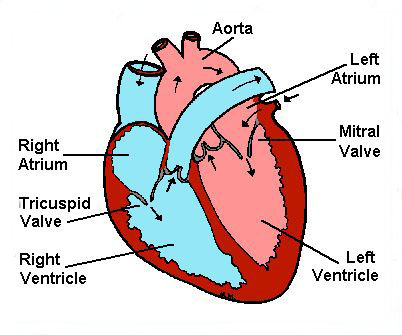CATS
Thomas
Sophie
Becky
Harry
Chloe
George
Polly
Noggy
Charlie
Jessica
Misty
Martha
Amy
Theo
Oscar
Esme
Feral Neutering
Cat Proof Garden
TORTOISES
Shelley
Nancy
Hibernation
HEDGEHOGS
Faithful
Oliver
Bruce
Buster
Uvey
Tiggie
LINKS
HOME PAGE
Hypertrophic cardiomyopathy is a heart "cardio" muscle disease "myopathy". The muscular walls of the left ventricle become abnormally thickened "hypertrophy". The left ventricular walls may thicken secondary to other diseases, e.g., systemic hypertension, or the thickening can be a primary disease in itself. Hypertrophic cardiomyopathy (HCM) is diagnosed when the thickening of the left ventricular walls is not caused by another disease.
When the left ventricle is unable to fill with a normal volume of blood, it follows that less than a normal amount of blood is pumped out to the body with each heartbeat. If the blood supply to other vital organs is inadequate, the heart rate may increase as the body attempts to compensate. If the blood flow to the kidneys is sufficiently decreased over time, the release of a hormone that
increases blood volume may be stimulated, which
in turn can increase the pressures on the left side of the heart and
contribute to congestive heart failure.
The left atrium may enlarge due to increased pressures caused by the
stiffened left ventricle's inability to fill with a normal volume of
blood from the left atrium. Atrial enlargement can slow blood flow,
which may in turn cause blood clots to form in the atrium. Clots that
find their way into the circulatory system can become lodged in such
a way as to block the flow of blood. Rear leg paralysis, a classic example,
occurs when a clot lodges where the descending aorta, a major artery,
branches to go to the rear legs. This situation is commonly referred
to as a saddle thrombus.
Diagnosis
A cat with HCM may show no clinical signs at all, may show signs of
respiratory distress, or may exhibit severe heart failure, leg paralysis,
or even sudden death. Signs such as a mild increase in the respiratory
rate can be so subtle that they go unnoticed. Many cats with HCM develop
a fast heart rate, and/or a heart murmur, and/or a gallop rhythm, an
extra heart sound, as the disease advances. These signs cannot be relied
upon however to indicate the presence of disease before it becomes severe.
An echocardiogram, ultrasound of the heart, is the most conclusive means
of diagnosing HCM. An echocardiogram reveals both the physical structure
and dynamic functioning of the heart. It is non-invasive and poses essentially
no risk to the cat. Electrocardiograms and X-rays may provide your veterinarian
with additional useful information, but cannot be used by themselves
to arrive at an unequivocal diagnosis. The veterinarian will also perform
other tests to determine if the hypertrophy is secondary to, caused
by, another illness such as hyperthyroidism or hypertension. If no other
causes are found, the cat is diagnosed with HCM.
Treatment
At present there is, unfortunately, no cure for HCM. If the cat's heart
is hypertrophied as the result of another disease, treatment of the
primary disease may result in some improvement of the heart condition.
Hypertrophy affects the heart's ability to function properly, one or
more medications may be prescribed in an effort to reduce the risk of
serious heart failure and to help the heart function as efficiently
as possible. Treatment may also, in some cases, prevent further damage
to the muscle of the heart walls.
Outlook
HCM sometimes offers no clues to its presence until it's
too late for any treatment to be of much help. Sometimes there are signs
that all is not well before the disease has progressed too far, but
even then it is impossible to predict its course with any certainty.
Some cats may develop only mild hypertrophy and suffer little compromise
of heart function, while others progress to more severe disease. HCM
may worsen quickly over a period of months; it may progress slowly over
several years; its severity may not change for some years and then suddenly
worsen, or it may not. Some cats with HCM may die very suddenly even
though they seemed healthy only moments before.
The veterinarian may prescribe one or more medications to manage the
cat's condition. Treatment will vary depending on the cat's clinical
signs and how HCM has affected the heart. While HCM cannot be cured,
medication can improve the heart's ability to function. It may help
the cat live longer and more comfortably.
A cat with mild to moderate disease may enjoy an essentially normal
life for a number of years. The long-term outlook is more guarded if
the cat has more than a mildly enlarged left atrium, a sign of severe
disease. The prognosis for a cat with heart failure, unfortunately,
is guarded to poor. Survival, on average, is only a few month.

